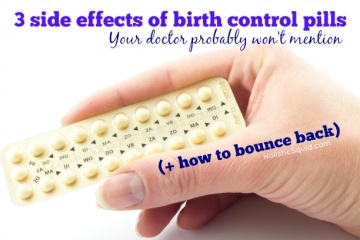
I'm super excited to share this post by Leslie Murphy, fellow acupuncturist and mom who has first-hand experience healing postpartum belly bulge caused by diastasis recti. ~Emily
Something wasn’t right. I looked 5 months pregnant, but I definitely WAS NOT pregnant. The pregnancy weight had dropped off (actually sucked off is more like it – thanks breastfeeding!) and yet there it was… a belly. A pregnant-looking belly.
I’ve never been one to have body issues but last summer I was not psyched about the prospect of wearing a swimsuit.
I honestly didn’t mind my belly that much, but I didn’t want to deal with the speculation of people wondering if I was pregnant again. Even worse, I didn’t want to correct someone congratulating me on my bun in the oven. Mortifying.
Don’t get me wrong. I’m proud of my mombod.
I wear my stretch marks like badges of honor. I am in awe that I brought two humans into this world and that I was able to have the natural births that I wanted. I earned those stretch marks. I’ll keep them. But the preggo belly? It could go.
Baby #3 wasn’t to blame for my belly, but I learned that diastasis recti was.
What is diastasis recti?
To understand diastasis recti, you have to know a little anatomy.
The rectus abdominis muscle is the abdominal muscle that runs along either side of the bellybutton. It’s the muscle we want to tone for those rock solid abs and what forms the six-pack. The two sections of this muscle are connected by connective tissue called the linea alba. When the two sections of the muscle separate and widen, stretching the linea alba, a gap forms.
This gap is called diastasis recti.
Naturally the rectus abdominis muscle separates during pregnancy to make room for the growing baby, but the gap should close postpartum. If the gap does not close, you can perform this simple test to determine whether or not you have diastasis recti (source):
- Lie on your back with your knees bent, feet flat on the floor
- Place your fingers with the palm facing you on your belly button
- Lift your head and neck just slightly off the floor while you press down with your fingers. If there is a gap, that is the diastasis
- Conduct the same test just above your belly button and just below the belly button (as the gap can measure differently in these places)
Diastasis recti is considered a gap measuring 2 finger widths or greater.
Why having a gap is a problem
The rectus abdominis muscle, along with its other core muscle buddies (the transverse abdominis and the internal and external obliques), essentially acts as a belt holding our belly and all of our organs in their places when it is strong and functioning properly.
With diastasis recti, our bodies are left to rely on weak, stretched out connective tissue to hold everything in place. This doesn’t work, which is why I looked pregnant.
Because of this abdominal weakness, people with diastasis recti may also experience constipation, back pain, pelvic floor discomfort and possibly even hernia or prolapse.
The real cause of diastasis recti
Motivated to lose my belly I vowed to do crunches daily and restart my Pilates practice until I found out, that was the absolute WRONG approach.
Crunches, side twists, planks and other similar moves actually make diastasis recti worse, and can make the belly protrude even more. Oops. A binding belt worn around your abdomen won’t fix diastasis recti either.
It wasn’t my pregnancy per se, or my 9 lb 9 oz son that caused my diastasis recti, but excessive and uncontained pressure in my abdomen.
Excessive pressure can develop from a variety of reasons such as poor posture, excessive sitting, high-heel shoe wearing, improper breathing, even sucking in your belly or holding in gas. This pressure has to go somewhere, and for people with a weak and unsupported core, it pushes out—creating a bloated looking belly, or pooch, like mine. (source)
Because excessive pressure is the true cause, pregnant women are not the only ones who may develop diastasis recti. Even women who are extremely athletic (as well as men and children) may develop diastasis recti if they have an unstable core or train in a manner that increases abdominal pressure. Joseph Pilates, the founder of Pilates, even developed diastasis recti!
So improper alignment and a weak, poor functioning core were the ultimate culprits to my diastasis recti.
Can you fix diastasis recti?
It is possible to fix this condition. It just takes time, effort, and the RIGHT exercises.
Not wanting to take the risk of doing incorrect exercises, I turned to the Mutu System for help. Wendy Powell, a personal trainer and postpartum exercise expert from the UK, developed this program to empower women to recover from diastasis recti and to strengthen their cores safely. Yes, she helps you get rid of your mummy tummy, but she’s all about empowering women to love their bodies and live healthier too.
I started the Mutu Focus program with a diastasis recti of 3, and after 8 weeks, I was down to 1.5—no more diastasis. I haven’t had any instances of lower back pain since starting the program either. Double bonus.
I love the Mutu exercises as they are simple, easy and only take me about 15 minutes a day to complete. This system is a life-long keeper for me, but to fully get rid of my belly? I had to understand the bigger picture.
My long term results
My gap is now closed thanks to Mutu, so no more diastasis recti for me. Is my belly gone? Almost.
I no longer look 5 months pregnant, but I still have some healing to do and adjustments to make.
I’m continuing to do my Mutu exercises to keep my core strong, but I’m also now focusing on healing my weakened connective tissue. This may take more time and patience as it may not truly bounce back until I wean my little one. Breastfeeding increases levels of the hormone relaxin which keep tendons and ligaments a bit lax, so until we are done it may be some time until my connective tissue regains its strength.
In the meantime, I’m using lemongrass essential oil (mixed with coconut oil as a carrier oil) as a topical remedy to increase its tone. I’m also taking this collagen supplement, as collagen has shown to help repair connective tissue as well.
I’m also learning how I can prevent creating excess pressure in my abdomen. Adopting proper alignment when sitting and standing is one way and a constant work in progress for me.
So my diastasis recti is gone and most of my belly along with it. Yet, most important is what I gained through this process—the knowledge how to correct, heal and strengthen my core. I’ll take it.
Ready to heal your diastasis recti? Click here to get Mutu.
Leslie Murphy is a licensed acupuncturist who is passionate about helping others live healthier, stress less and become free of pain. Follow her at Balanced Health Acupuncture.











Great post! We need to increase awareness of diastasis recti. I am still healing mine 16 months postpartum. I did the Mutu System and while I thought it was a great program, it didn’t fix my 4 finger width diastasis. I needed physical therapy because it turns out my pelvic floor was too tight and that was a big part of the reason why my gap wasn’t closing. I now wear a belly bandit in addition to doing exercises from physical therapy and learning to engage my transverse abdominus, and my gap is down to 1.5 fingers as well! Everybody’s experience is different, so thanks for helping to get the word out there.
Thanks Kasey! Physical therapy is a great resource to help diastasis recti when you can find someone trained in and knowledgable of the condition (especially when the pelvic floor is an issue). So happy to hear that it’s helped you and that your gap is closed. Congrats and good luck on your continued healing.
So true!
It took me 6 years to know I had diastasis! and also pelvic problems, ginecologists doctors do not look for this, at least here in Barcelona. Actually I’m healing my prolapse with a fisiotherapist and then I’ll cure my diastasis
Best regards!
Good luck to you Blanca!
Thank you so much for posting this article. After the birth of my second child 2.5 years ago, I have had so many issues that the Dr.s keep disregarding saying it is prolapse issues that surgery can fix. I also still have that 4/5 month belly that seems to not go away no matter what I am doing even if I have lost most of my pregnancy weight. I am going to look into this. It sounds exactly what I have! I have never heard of this before.
Glad to hear that this is helpful to you. I think it’s important to know that there are options like the Mutu system to try before jumping into surgery. Good luck to you!
Just wondering about timeframes. I’m 6 months postpartum and exclusively breastfeeding. I self-diagnosed a 2-finger width diastasis (thank you extremely helpful video and information :). Should I give my body more time to heal before starting the exercises? This is my second child of average birthweight (7.5 lbs), and I’ve lost all but 7 lbs of the extra weight. I’m not looking to lose a particular amount, just want to tone away the extra belly (I look the same as I did 5 months pregnant, pretty sure at least half of the weight is around the midsection anyway).
Thanks for the excellent, easy to read info!!
Hey Stephanie,
As long as you feel ready and comfortable to move, you can begin making small adjustments to your overall alignment. This may even be worth practicing as you do everyday activities, like holding your baby or breastfeeding. Simple pulling the ribs in and down can help mend DR.
All the best!
Emily xoxo
Omg are you serious? that’s awesome. I signed up for the Mutu System but i haven’t fully committed. Your post gives me hope. How long did it take you to get it to go away? I think i have a 2 finger gap. I have had my 2nd and 3rd child (twins) and i really want to get this to go away.
Is it possible for this to be the case years after having a child (youngest us 7)? I have never heard of this but seriously I struggle with the belly no matter what I do.
Hey Krystyn,
It’s totally possible if you haven’t done anything to correct what may have caused DR in the first place…like wonky alignment or “bad” habits related to how you walk, sit, etc. Therapy for DR is definitely worth exploring!
Emily xoxo